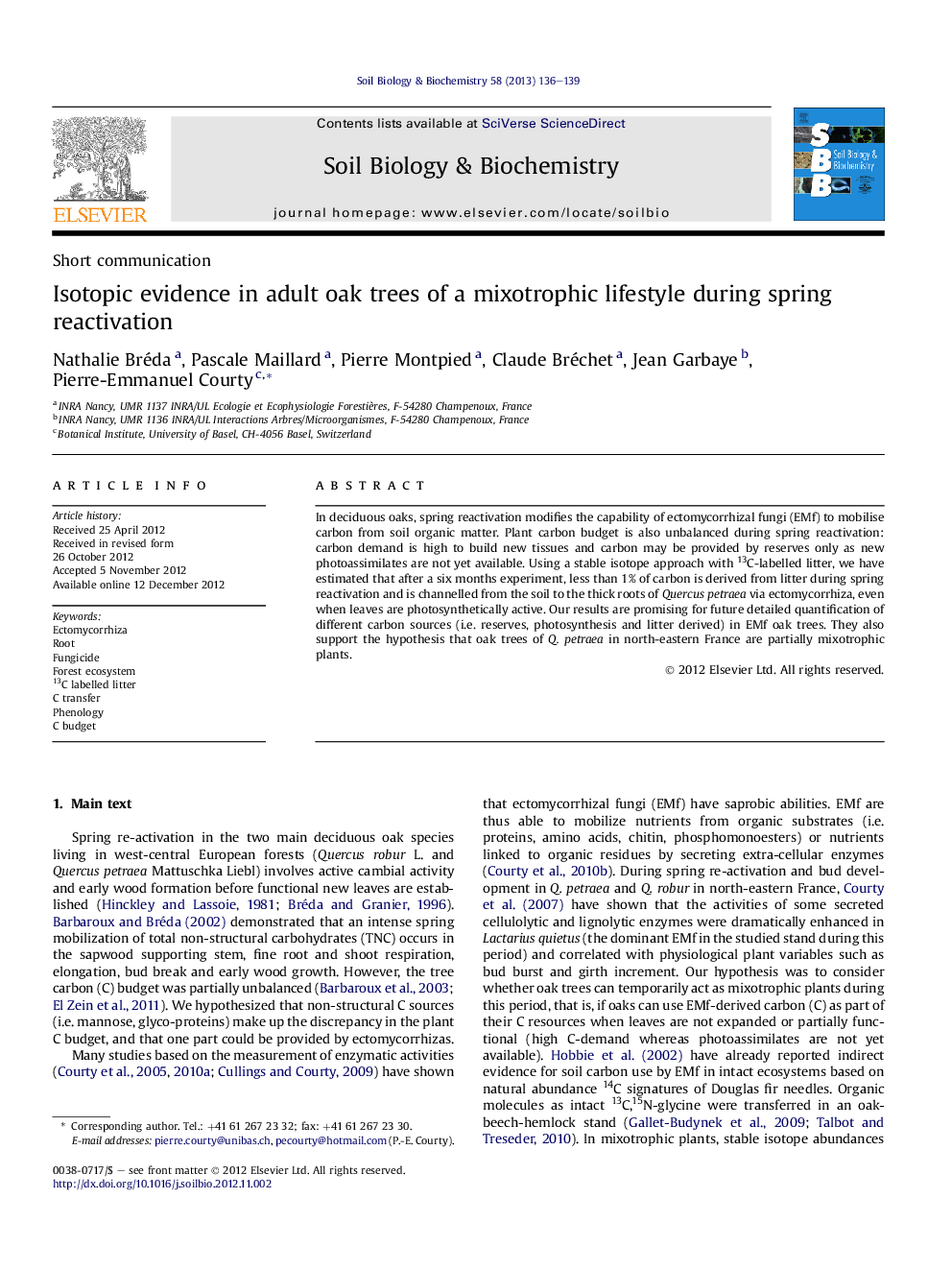| Article ID | Journal | Published Year | Pages | File Type |
|---|---|---|---|---|
| 2024878 | Soil Biology and Biochemistry | 2013 | 4 Pages |
In deciduous oaks, spring reactivation modifies the capability of ectomycorrhizal fungi (EMf) to mobilise carbon from soil organic matter. Plant carbon budget is also unbalanced during spring reactivation: carbon demand is high to build new tissues and carbon may be provided by reserves only as new photoassimilates are not yet available. Using a stable isotope approach with 13C-labelled litter, we have estimated that after a six months experiment, less than 1% of carbon is derived from litter during spring reactivation and is channelled from the soil to the thick roots of Quercus petraea via ectomycorrhiza, even when leaves are photosynthetically active. Our results are promising for future detailed quantification of different carbon sources (i.e. reserves, photosynthesis and litter derived) in EMf oak trees. They also support the hypothesis that oak trees of Q. petraea in north-eastern France are partially mixotrophic plants.
►13C-litter derived is transferred to thick roots via ectomycorrhizas. ► Fungicides were reducing 13C-litter derived in thick roots and ectomycorrhizas. ► Quercus petraea oak trees are considered as mixotrophic during bud break.
